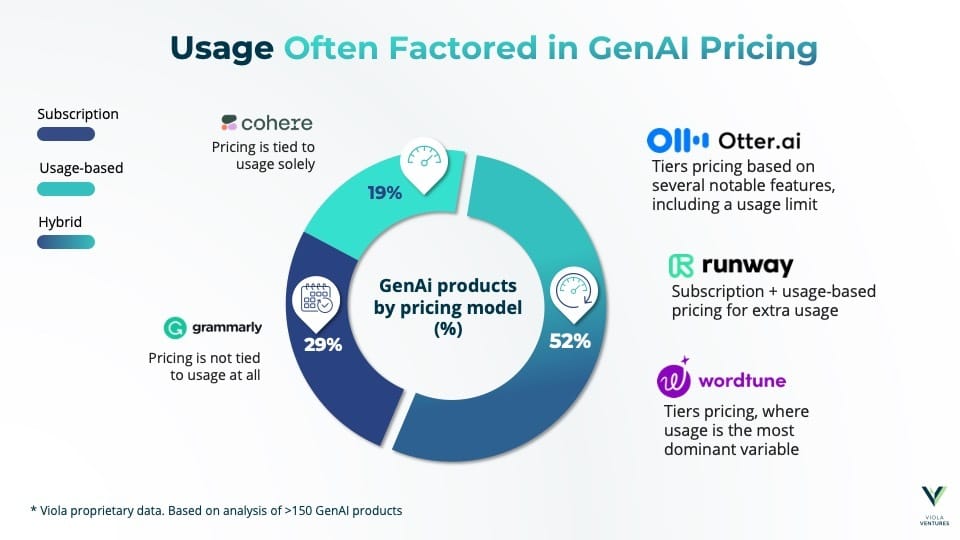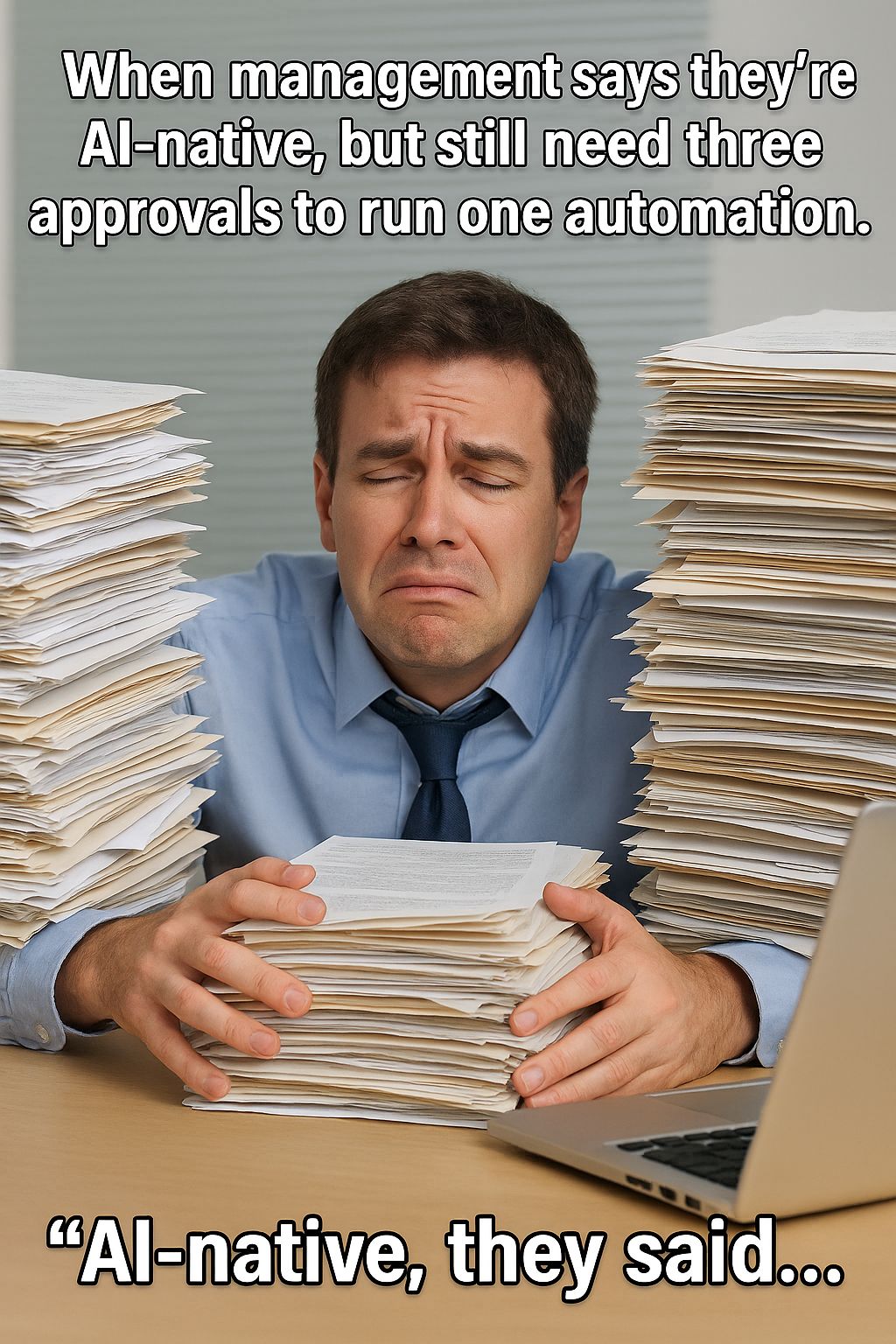8 bits for a Byte: Most AI strategies fail not for lack of ambition but for lack of rigor. This issue is your roadmap to avoiding that fate—covering costs, pricing models, agentic workflows, leadership, training, and ROI. It’s the ICONIQ pragmatic guide for leaders who want AI to be more than a science experiment. Let’s get to work.

🔥 FREE Vibe Coding Webinar 🔥
Think Vibe Coding is overrated? Maybe you're already a wizard.
If not, you need this. I’m giving a free 40-min crash course that'll transform how you use AI—plus killer prompting tips to boost your game. 10 people have signed up, what are you waiting for?
How to get in?
Refer 3 friends OR
When you give me a 5-star review at the end of the Webinar you will buy me a coffee.
Easy. Limited spots. Don’t miss it.
Or just say screw it and buy me a cup of Joe right now. I drink a pot a day so I can use all I can get!

Let’s Get To It!

Welcome To AI Quick Bytes!
Bit 1: Why AI-Native Companies Scale Faster
It’s tempting to think all AI product teams face the same learning curve. The data says otherwise. ICONIQ’s survey reveals 47% of AI-native products are already scaling, while many AI-enabled products are stuck in beta or pre-launch.
Why? AI-native companies treat generative AI as the core business model, not a bolt-on. This clarity drives faster iteration cycles, better infrastructure decisions, and more focused teams. They don’t just use AI—they are AI.
AI-native = designed for scale, from infra to funding
47% scaling vs. 13% for AI-enabled companies
Avoids legacy constraints slowing down AI-enabled peers
ACTION BYTE:
Challenge your team: what would you design differently if AI was the business, not the feature?


In the age of AI, trust isn’t just valuable—it’s your only true competitive moat.
Robert Franklin
Quote of the Week
Bit 2: Quoting myself, and many others


Bit 3: Agentic Workflows Take Center Stage
Forget single-task automation. 47% of high-growth companies are deploying AI agents that orchestrate entire workflows. Another 32% are piloting use cases.
This shift marks a transition from reactive to proactive software. Agentic workflows don’t just respond—they anticipate. They manage complexity, surface recommendations, and complete tasks autonomously. The companies getting this right are not just building features—they’re redefining user expectations.
47% of high-growth companies deploying agentic workflows
Move from passive tools to proactive assistants
Redefines how users engage with software
ACTION BYTE: Sketch a user journey that becomes dramatically simpler with an AI agent in the loop.

Stop Asking AI Questions, and Start Building Personal AI Software.
Transform your AI skills in just 5 days through this free email course. Whatever your starting point, by Day 5 you'll be building working software without writing code.
Each day delivers actionable techniques and real-world examples straight to your inbox. No technical skills required, just knowledge you can apply immediately.


AI pricing isn’t settled—and that’s the opportunity. AI-enabled companies are bundling AI features into premium tiers or even giving them away, with only 21% adopting usage-based pricing.
This works to drive adoption now but creates a ticking margin time bomb. As usage explodes, companies will need to pivot to consumption or outcome-based models. The winners will be those who start instrumenting usage and ROI data early, so pricing can evolve with customer value.
Most companies bundle or give away AI features
Usage-based pricing at 21% today
Build proprietary small models that you own and are built on your data
Tracking usage and ROI will be key to future pricing shifts
ACTION BYTE:
Audit your pricing model for AI’s hidden costs—and start planning for a usage-based future.

Bit 5: Balancing Costs: API Fees, Inference, and Training
AI’s dirty secret? The costs don’t just rise—they become unpredictable. ICONIQ’s 2025 survey shows API usage fees as the single hardest expense to control, even ahead of inference and training costs.
High-growth companies know this and are fighting back. They’re moving to open-source models, optimizing inference pipelines, and choosing cheaper hardware. Because once usage scales, these costs can spiral out of control and eat your margins alive.
API fees are the #1 cost-control challenge
Inference and training costs surge with scale
Open-source and optimization are essential levers
ACTION BYTE:
Run a scenario plan: What does your AI infra spend look like if usage 10x’s?

I have been using Replit and it is truly amazing. I have already built 2 applications and one website that I use on a daily basis. Sign up below to start VIBING for us both to receive extra monthly credits!
Why Replit Agent Isn’t Just for Developers — It’s for Leaders Who Build
We’re entering a new phase in AI—where hands-on experimentation isn’t just a nice-to-have, it’s a leadership imperative. If you’re in the C-suite, one of the most strategic things you can do right now is experience what it feels like to co-create with AI.
Replit Agent makes that possible.
This isn’t just an AI that autocompletes code. It’s a context-aware assistant that helps you build, end-to-end. No deep technical background required. Just an idea and a few lines of plain English.
What does this mean in practice?
You can prototype internal tools—think dashboards, bots, workflow automations—by describing what you want and iterating in real time.
You can test business hypotheses by spinning up working interfaces instead of waiting on product sprints.
You can personally explore the boundaries of what AI can (and can’t) do—equipping you to lead with credibility and clarity.
Replit Agent isn’t about replacing your dev team. It’s about making sure you can move faster, think visually, and engage with the product and engineering side of the house in a new, more empowered way.
Why Replit over others?
Tools like GitHub Copilot and Cursor are great accelerators—for coders. Replit Agent is different: it helps non-coders go from concept to execution. It handles project scaffolding, builds logic from prompts, and can deploy live applications.
This is your sandbox. Use it to model a customer experience idea. Draft a simple LLM-powered assistant. Or explore what a future product might feel like—before funding a roadmap.
Action Byte: If you’re leading digital transformation from the top, your credibility comes from doing, not delegating. Replit Agent gives you a fast, intuitive way to understand—and shape—how your org will build in the AI era.


Bit 6: Sunday Funnies
ChatGpt prompt image / theme generation is getting better!

Bit 7: Dedicated AI Leadership: Who’s Really Hiring?
AI isn’t a side project anymore—it demands leadership. Data shows that by $100M in revenue, most companies have dedicated AI/ML leadership in place. Titles like Chief AI Officer, Head of ML, or AI Research Lead aren’t vanity—they’re strategy.
Why? Because AI projects sprawl. Without a central owner, you get duplicated efforts, poor governance, and no clear path to ROI. The companies winning here treat AI as a first-class product line, with leadership, budget, and headcount to match.
Majority of $100M+ firms have dedicated AI/ML leadership
Avoids fragmented efforts and governance gaps
Elevates AI to a core strategic priority
ACTION BYTE:
Ask: Who owns AI at the highest level in your org? And do they have the budget and authority to deliver?

Learn AI in 5 minutes a day
What’s the secret to staying ahead of the curve in the world of AI? Information. Luckily, you can join 1,000,000+ early adopters reading The Rundown AI — the free newsletter that makes you smarter on AI with just a 5-minute read per day.


Bit 8: The Shift to Multi-Model Strategies
The age of “one model to rule them all” is ending. Companies are averaging 2.8 models per use case, often mixing OpenAI’s GPT with Anthropic, Google Gemini, and others.
Why? Different models excel at different tasks, regions, or cost profiles. Enterprises want flexibility to swap models quickly and avoid lock-in. The leaders are building architectures that make it trivial to experiment and optimize for cost, accuracy, and compliance.
Companies average 2.8 models in production
Multi-model strategies reduce vendor risk and increase flexibility
Architectures built for model-swapping support rapid innovation
ACTION BYTE:
Review your architecture for flexibility: can you swap models without rework?

This Week’s Byte:
Strategic Overview
True AI integration goes beyond acquiring tools; it requires cultivating an organizational culture rooted in trust, autonomy, and continuous learning. Executives must dismantle traditional bureaucratic processes, adopting agile systems that empower teams to rapidly execute and learn from mistakes. AI-native companies, inherently embedding AI into their core business models, scale significantly faster by leveraging proactive AI-driven workflows and anticipating user needs. Organizations must proactively evolve pricing strategies towards consumption-based models, tightly manage AI-related costs through optimized infrastructures, and foster hands-on executive engagement with AI tools. Dedicated AI leadership roles and multi-model flexibility are essential for coherent execution and adaptability.
Closing Reflection
Thriving in the AI era hinges on building an adaptive organizational culture focused on trust, rapid iteration, and continuous learning. Leaders must courageously reimagine their strategies and structures, positioning their organizations to effectively respond to technological disruptions and maintain a competitive edge.
Until next time, take it one bit at a time!
Rob
P.S. Thanks for making it to the end—because this is where the future reveals itself.
The ROI Question: Proving AI’s Worth Internally
It’s easy to buy AI tools. It’s harder to prove they work. Internal productivity budgets for AI are set to double in 2025, but only about half of employees actually use them regularly.
Meanwhile, 75% of companies track productivity gains, but cost savings and employee adoption remain tough. The lesson? ROI isn’t automatic. It takes thoughtful onboarding, clear use cases, and relentless measurement.
Internal AI budgets are doubling in 2025
Employee adoption remains around 50%
ROI measurement must go beyond deployment
ACTION BYTE: Define clear success metrics before rolling out new AI tools internally.
Join thousands of satisfied readers and get our expertly curated selection of top newsletters delivered to you. Subscribe now for free and never miss out on the best content across the web!





